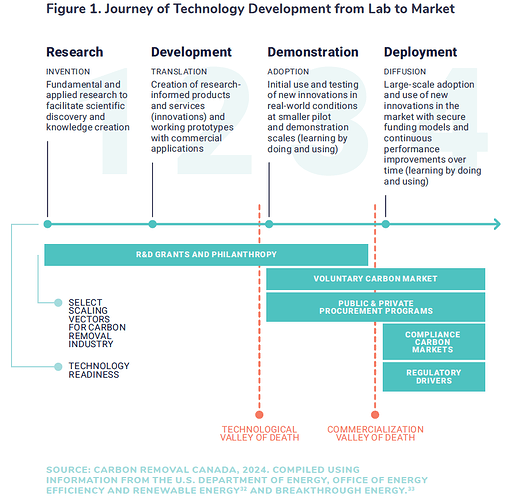In a report published by Carbon Removal Canada, ‘Procuring with Purpose: Canada’s Opportunity to Shape Carbon Removal Market’, Tim Bushman has laid down the steps that Canada can take to establish a market that can adequately support carbon removal activities.
Key takeaways:
- Canada experiences warming at a faster pace compared to other regions of the world, higher than the global average by around 50 % to 75 %.
- The growing scale of global warming has repercussions for the Canadian economy, a trend captured by the increases in losses suffered due to climate change that are covered by insurance. The reluctance to take targeted actions to reverse the status quo can significantly diminish Canada’s annual GDP.
- CDR is an important component of the toolkit that has been envisioned for countering climate change.
- There are major obstacles that need to be overcome to ensure that the amount of carbon that is removed gradually grows and CDR activities bolster the efforts that are underway for tackling climate change at a global scale.
- The provision of funding, which has traditionally failed to attract sustained support from the private and public actors, will play an important role in counteracting challenges preventing the uptake of CDR.
- In Canada, the federal government has not launched a funding scheme dedicated to activities that remove carbon permanently. However, the tax credit that has been introduced to incentivize carbon capture, utilisation and storage will be applicable to direct air capture.
- The insufficiency of the number of entities that purchase credits in the voluntary CDR market and the lack of rules governing the possible merging of voluntary and compliance CDR markets have exacerbated the difficulties faced by entities engaging in CDR when taking steps to have access to funding.
- As a result, governmental measures will play a pivotal role in driving the growth of the CDR activities, both in number and in terms of the impact generated.
- Of all the routes that can be taken to facilitate the operations of entities engaging in CDR, government procurement is the option that can best catalyze change in view of the barriers that prevent carbon markets from functioning adequately. In financing CDR activities, governments can ensure that the public request directed at them can be maintained for an extended period of time, exceeding the potential of the voluntary carbon market. The pursuance of this course of action can establish a framework for merging voluntary and compliance carbon markets and introducing other governance mechanisms.
- Nonetheless, states cannot shoulder the responsibility of creating CDR funds on their own and should cooperate with other private and public actors when financing CDR activities.
- In the federal budget that it announced in April 2024, the Canadian government has explicitly stated that it is willing to finance CDR activities, a development that marked the introduction of one of the first programs entailing the allocation of funds to CDR activities by a public entity. This situation has provided Canada with the chance to establish a blueprint for CDR markets as well as entities engaging in CDR.
- To leverage this opportunity, Canada should take the following steps:
a) creation of a CDR-specific program
b) dedication of funds for different CDR activities
c) assignment of responsibilities to different public actors in an unambiguous manner
d) introduction of stringent criteria for evaluating the merits of different CDR projects
e) identification of a suitable contracting scheme
f) driving compliance with monitoring, reporting and verification standards
g) ensuring that local groups can participate to decision-making
h) assessment of the performance of CDR activities through the examination of reports
Read the full report here: Reports & Resources
